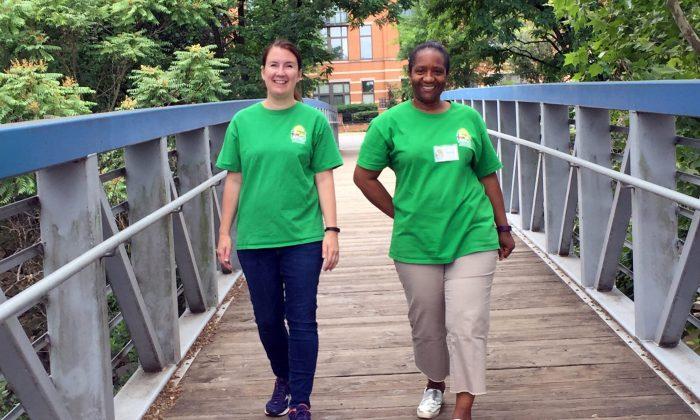It takes moxie to flip an unhealthy lifestyle to a healthy one—particularly for folks over 60.
Most baby boomers approach retirement age unwilling to follow basic healthy lifestyle goals established by the American Heart Association, said Dr. Dana King, professor and chairman of the department of family medicine at West Virginia University. That belief comes from his university’s 2017 study comparing the healthy lifestyle rates of retired late-middle-aged adults with rates among those still working.
“People do financial planning for retirement, but what about retirement health planning?” King asked.
Kaiser Health News interviewed three other prominent experts on aging and health about how seniors can find the will to adopt healthier habits.
Motivated seniors can begin by following KHN’s 10-step program:
1. Buy great sneakers. Purchase a pair of top-quality sneakers specifically designed for walking, said Carolyn Rosenblatt, founder of AgingParents.com, who started participating in triathlons at age 63 and continues to do them at age 70. Start by walking around the block. Expand that to 30-minute walks at least three times weekly—or set a goal to increase your walking distance ten percent each week. And leave your sneakers by the front door.
2. Practice your balance. The best way to avoid falls is to retain a good sense of balance, said Rosenblatt. Practice standing on one leg with your eyes closed for at least 30 seconds.
3. Improve your breakfast. Stop eating the sweet roll with coffee. Consider substituting it with a home-blended smoothie of banana, seasonal fruits, almond milk, and protein powder. And cut out excess sugar in all your meals, said Rosenblatt. Replace soda with seltzer water.
4. De-stress wisely. Find ways to manage your stress that don’t involve food, alcohol, or smoking. There are lots of meditation programs you can download on your phone and listen to for even 10 minutes, said Rosenblatt. Walking in nature works wonders.
5. Practice resistance training. To keep your muscle mass from disappearing, do resistance training by lifting dumbbells or barbells or using weight machines, said Kay Van Norman, owner of Brilliant Aging, a consulting firm for healthier aging. “Your muscles are amazing, but if you don’t use them, you lose them,” she said.
6. Hit the floor. Aging adults need to regularly practice getting down on the floor and standing back up again. “If you don’t get down on the floor and back up, you won’t be able to do it after a while,” said Van Norman.
7. Challenge your speed. While it might not seem as if folks over 60 need to worry about exercise that involves speed and intensity, they do, said Van Norman. “Most people don’t even think about speed in order to stay healthy. But tennis players are doing that all the time. You need to do something to challenge your speed, not just your power.” That’s why sports like tennis can be terrific as you age, she said.
8. Believe in yourself. Faced with self-doubt and depression after several tragic, challenging events, Sharon Sultan Cutler, 71, turned to therapy to help her feel better about herself. “The first person you have to believe in is yourself,” said Sultan Cutler, an author. “People like to be around other people who believe in themselves.”
9. Tackle a project. Pick a project that has meaning to you. Sultan Cutler opted to co-author (with two other writers) her first book, “Bandstand Diaries: The Philadelphia Years, 1956-1963,” an inside look at her once favorite TV show, Dick Clark’s “American Bandstand.” Never mind that she’d never written a book before. Now she’s on her third book, “Your New You After 65: Valuable Advice to Inspire Your Awesome Aging.” “It’s like having a daydream that you can actually make happen,” she said.
10. Embrace self-improvement. Some call this lifelong learning. Living a healthier lifestyle requires constant learning and self-improvement, said Sultan Cutler. Seek out local learning resources like community colleges, where classes are often steeply discounted for seniors, she said. “Self-improvement isn’t just physical. It’s mental, too.”
Bruce Horovitz is a freelance journalist and regularly writes for Kaiser Health News, which first published this article. KHN’s coverage related to aging and improving care of older adults is supported in part by The John A. Hartford Foundation.





